1. AlN Bulk Crystals and Templates
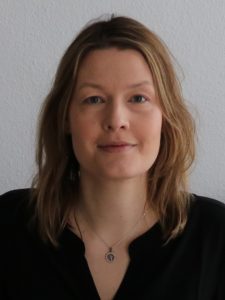
Fabrication of high-quality AlN and AlGaN templates
Dr. Sylvia Hagedorn (Ferdinand-Braun-Institut, Germany)
Sylvia Hagedorn works as a senior scientist in the Materials Technology Department at Ferdinand-Braun-Institut gGmbH. She received her PhD from the Technical University of Berlin in 2015. Since 2008, she has been working on the growth and characterization of III-nitrides with a special focus on AlN pseudo-substrates for UV-LEDs
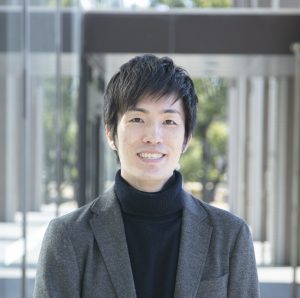
Homo-epitaxial growth on high temperature annealed AlN template and device applications
Dr. Kenjiro Uesugi (Mie University, Japan)
Kenjiro Uesugi received his B.E. and M.S. degrees from The University of Tokyo in 2011 and 2013, respectively. In 2018, he joined Mie University and is currently an associate professor. He received his Ph.D. in 2019
2. Growth and Properties of AlGaN Heterostructures

Improved Yield and Performance of III-N Ultraviolet Avalanche Photodiodes via Ion Implantation
Prof. Russell Dupuis (Georgia Institute of Technomogy, USA)
Prof. Russell D. Dupuis is an internationally recognized expert in III-V compound semiconductor epitaxial materials and devices, including optoelectronic and electronic devices. He worked in industry at Texas Instruments and Rockwell International. He was a Member of Technical Staff and a Distinguished Member of Technical Staff in the Physics Research Division at Bell Laboratories, Murray Hill NJ. Dupuis was appointed the Judson S. Swearingen Chaired Professor in Electrical and Computer Engineering at The University of Texas at Austin in 1989. He joined Georgia Institute of Technology in 2003 as full Professor in ECE and Materials Science and the newly established the Steve W. Chaddick Endowed Chair in Electro-Optics and a Georgia Research Alliance Eminent Scholar. He has worked on MOCVD growth of III-V devices since 1975 and on III-N devices since 1994. He has won many national and international awards for his work on compound semiconductors.

AlGaN nanowire LEDs / MBE for UV sources
Dr. Songrui Zhao (McGill University, Canada)

High performance AlGaN-based UVC- and UVB-LEDs on nano patterned sapphire substrate
Prof. Xinqiang Wang (Peking University, China)
3. Growth and Properties of Oxides (Ga2O3 etc.) and Diamond

Ultra Wide Band Gap Gallia and Zinc Gallate electronic properties
Dr. Ekaterina Chikoidze (CNRS Paris Saclay University, France)
Ekaterine Chikoidze has Graduated and have got the PhD degree(1999) in semiconductor physics from Faculty of physics, at Tbilisi State University, Georgia. Having almost 25 years of experience of working in the field of physical properties of Wide band gap materials: ZnS, Diamond, ZnO, 3d magnetic oxides, transparent conducting oxides, Ga2O3. Being specialist of electrical and magnetotransport properties, She has developed several home made experimental instrumentation dedicated to study highly resistive thin films in broad range of temperature and magnetic field.
Since 2016 her main research activity is related to Ga2O3 and related materials for high power and deep UV electronics. Expertise of Dr.Chikoidze involves her in permanent collaborations with researchers from 14 countries.
Coordinator of several international and national projects. Knowledge of Georgian , English , Italian, Russian , French and Experience working in news paper Editorial Houses and Radio.
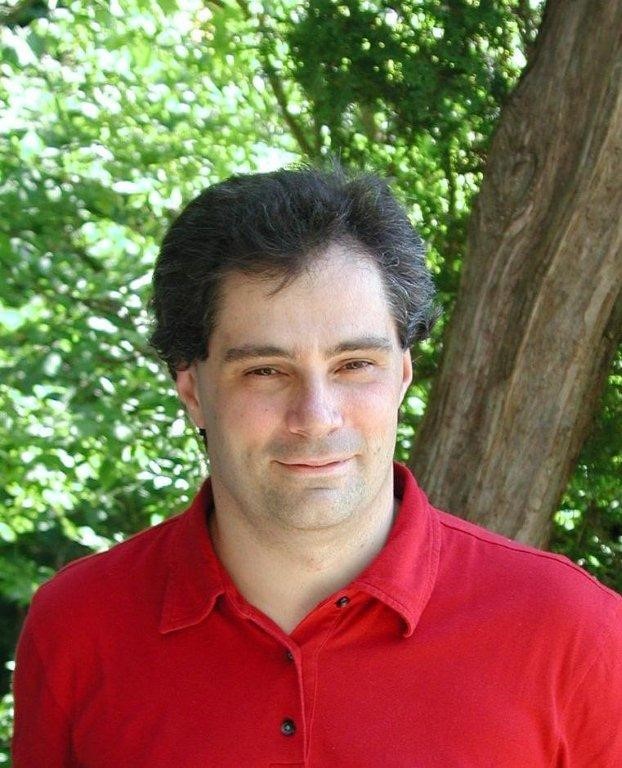
Defect-Related Optoelectronic and Magnetic Properties of Nanostructured Nickel Oxides as Charge Transport Layers in Organic Photovoltaics
Prof. Giovanni Fanchini (University of West Ontario, Canada)
Prof. Giovanni Fanchini joined The University of Western Ontario (Western) in September 2009 as an Assistant Professor, from CSIRO (Melbourne, Australia) where he was a Research Scientist working on printable solar cells (2008-2009). Since then, he was promoted to Associate (2015) and Full Professor (2021) at Western. He has held the Tier 2 Canada Research Chair in Carbon-based Nanomaterials (2010-2020) and has developed from scratch a Western lab dedicated on graphene and ultrathin oxide nano-characterization, with a focus on their use in nano-optical devices and solar cells. Fanchini has totalled over 120 career publications. His expertise in graphene and ultrathin oxides, specifically from solution-based processing and photovoltaic applications, is well represented by >50 invited talks and 4 invited reviews in this field over the last 6 years. Awards include an Ontario Early Researcher Award (ERA) and a Petro Canada Young Innovator Award.
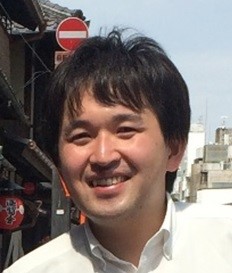
Germanium dioxide (GeO2) as a new power device material
Prof. Kentaro Kaneko (Ritsumeikan University, Japan)
Kentaro Kaneko obtained Ph.D degrees in Engineering from Kyoto University in 2013. He was engaged in research of gallium oxide (Ga2O3) in his early carrier. He founded a venture company when he was a Ph.D student, whose name is FLOSFIA Inc. FLOSFIA sells Ga2O3 Schottky barrier diode power device from 2020.
He worked in Kyoto university as an assistant professor and lecturer until June, 2022 and he has been a full-professor in Ritsumeikan University from July, 2022.
From 2021, he starts research of germanium dioxide (GeO2) for power device application and founded his 2nd venture company of PATENTIX Co. for developing of new material of GeO2.

Ultrawide Bandgap Ga2O3 Epitaxial Thin Film Membrane for Deep Ultraviolet Photodetection
Prof. Xiaohang Li (KAUST University, Saudi Arabia)
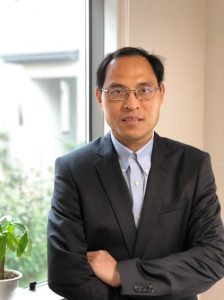
Diamond-based photodetector
Dr. Meiyong Liao (NIMS, Japan)
Dr. Meiyong Liao is a Chief Researcher at National Institute for Materials Science (NIMS), Japan. He obtained PhD degree at Institute of Semiconductors, Chinese Academy of Sciences (joint with COSDAF, City University of Hong Kong) in 2002. He was a visiting associate professor at Kyoto University from 2002 to 2004. In 2004, he joined in NIMS as a postdoctor researcher and was then employed as a senior researcher in 2008. His current research interests cover from semiconductor diamond growth to photonics, electronics, and MEMS.

Defect-Related Optoelectronic and Magnetic Properties of Nanostructured Nickel Oxides as Charge Transport Layers in Organic Photovoltaics
Prof. Takeyoshi Onuma (Kogakuin University, Japan)

Growth of high purity and doped β-Ga2O3 films using MOCVD
Dr. Andrei Osinsky (Agnitron Technplogy, USA) (President and CEO of Agnitron)
4. UV-emitters (Lasers and LEDs) and Detectors

Pushing VCSELs to the ultraviolet
Prof. Åsa Haglund (Chalmers UT, Sweden)
Åsa Haglund’s research interests encompasses III-nitride lasers and light-emitting diodes, with a focus on nanostructuring for new optical functionality and thin-film devices enabled by electrochemical etching. A strong focus is on vertical-cavity surface-emitting lasers (VCSELs) where her group have identified and proposed schemes to combat a large optical loss mechanism, which has contributed to today’s state-of-the-art devices. High-contrast gratings have been implemented to demonstrate blue VCSELs with built-in polarization selection and more recently nanostructures for optical engineering have enabled ultraviolet photonic crystal surface-emitting lasers (PCSELs). The boundaries on what can be selectively etched has been pushed by electrochemical etching, which led to the demonstration of the world’s shortest emission wavelength from a VCSEL at the time at 300 nm.
Åsa has a master’s degree in Physics from Gothenburg University and received a PhD degree in Electrical Engineering in 2005 from Chalmers University of Technology. She has been a visiting researcher at Ulm University in Germany and Lund University in Sweden and is since 2018 a Professor at Chalmers University of Technology. She is a recipient of several awards such as a European Research Council consolidator grant (2020), Swedish research council consolidator grant (2019), SSF young research leader award (2014), Hasselblad award (2012) and supervisor of the year award at Chalmers (2021).

Optical Wireless Communication with Ultraviolet micro-LEDs
Prof. Martin Dawson (Strahclyde University, UK)

Toward enhancement of light output power of AlGaN-based UV-B laser
diodes
Prof. Motoaki Iwaya (Meijo University, Japan)

Deep-ultraviolet light-emitting diodes integrated with h-B(Al)N
Prof. Jianchang Yan (Institute of semicond, China)
Jianchang Yan, PhD, Professor, Institute of Semiconductors, Chinese Academy of Sciences. Dr. Yan received his bachelor degree at Tsinghua University, and his PhD degree in Microelectronics and Solid State Electronics at the University of Chinese Academy of Sciences. In 2009, he joined the Semiconductor Lighting R&D Center of (Chinese Academy of Sciences) CAS to continue the research work on III-Nitride material and devices. He was visiting scholar of Paris Sud University in 2015-2016. He won the second prize of National Award for Science and Technology Progress in 2015. He is leading the III-Nitride ultraviolet light-emitting device group CAS, focusing on the research of Al(Ga)N-based UV LEDs and UV LDs. He is also the co-founder of the Advanced Ultraviolet Optoelectronics company which is the leading provider of UV-LED products.
5. Nanostructures and Nanodevices

AlN nanowire LEDs
Dr. Bruno Daudin (CEA Grenoble, France)

Deep ultraviolet micro LEDs
Prof. Haiding Sun (UST of China, China)
Prof. Haiding Sun received his Ph.D. in Electrical Engineering from Boston University. He is now a Professor in the School of Microelectronics at University of Science and Technology of China. He has published more than 110 peer-reviewed SCI-index journal papers including Nature Electronics, Advanced Materials/Advanced Functional Materials, ACS Nano/Nano Letters etc. He has written 4 book chapters and holds 20+ Patents. His research interests include the investigation of the physics, MBE and MOCVD epitaxy, fabrication, and characterization of wide bandgap semiconductor materials based on group III-Nitrides and III-Oxides for both optoelectronics and electronic devices. His work has been highlighted by more than 100 times in many media outlets including Compound Semiconductors, Semiconductors Today, Phys.org, etc. He is a IEEE Senior Member, and the recipient of the 2021 iCANX Young Scientist Award and 2021 IAAM Young Scientist Medal. He is currently Associated Editor of IEEE Photonics Technology Letters.
6. UV Photonics and Photonic Devices
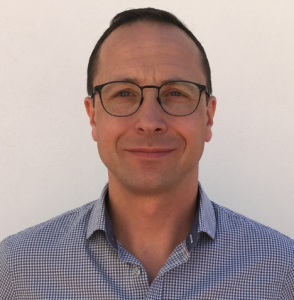
Cathodoluminescence excitation spectroscopy: revealing the excitation pathways in the nanometer scale
Dr. Raphaël Butté (EPFL, Switzerland)
Raphaël Butté is a Senior Scientist at the Ecole Polytechnique Fédérale de Lausanne (EPFL), Switzerland. His research is essentially focused on the optical properties of wide band gap III‐nitride semiconductors.
Using this platform, together with his colleagues, he was the first to demonstrate room temperature polariton lasing in planar microcavities. Switching to the waveguide geometry enabled exploring the physics of guided polaritons, which opens promising perspectives for photonic integrated circuits.
His research topics also include the optical properties of photonic crystal-based resonators, that of single photon emitters, and the role of alloy disorder and point defects on the quantum efficiency of LEDs and laser diodes.

Deep UV light generation by nitride-based second harmonic generation wavelength conversion devices
Prof. Katayama Ryuji (Osaka University, Japan)
7. Wide-gap Heterostructure Physics
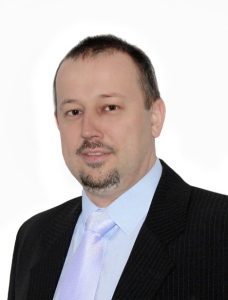
Studies of the electric field distribution in III-N heterostructures and the position of the Fermi level at the van der Waals/III-N interface by contactless electroreflectance in UV
Dr. Robert Kudrawiec (Wrocław University, Poland)
Robert Kudrawiec received the M.S. and Ph.D. (Hons.) degrees in physics from the Wrocław University of Science and Technology (WUST), Poland, in 2000 and 2004, respectively, and the D.Sc. (Habilitation) degree in physics from the Institute of Physics, WUST, in 2010. His Ph.D. thesis was devoted to dilute nitrides. During the M.S. and Ph.D. studies, he focused on applications of the modulation spectroscopy to investigate the band structure of low dimensional semiconductor heterostructures. From 2006 to 2007, he was a Post-Doctoral Scholar with Stanford University, Stanford, CA, where his research was centered on the band structure and defects in GaInNAsSb–GaAs materials. From 2012 to 2013, he was a Researcher with the Lawrence National Berkeley Laboratory, Berkeley, CA, where his activity was focused on novel III–V and II–VI materials dedicated for solar cell applications. Since 2018, he has been a full Professor with the Faculty of Fundamental Problems of Technology, WUST. He has co-authored over 300 publications in refereed journals in his research areas. His current research interests include the application of photoreflectance, contactless electroreflectance, micro-photoluminescence, time resolved photoluminescence spectroscopies and other optical techniques to investigate the optical properties of III-N materials and low dimensional structures, and recently perovskites and van der Waals crystals including graphene, h-BN, monochalcogenides, and dichalcogenides. Since 2017 he is associated with the Polish Center for Technology Development at Wroclaw, where he is working on UV light emitters and hybrid van der Waals/AlGaN photodetectors for UV spectral range. In 2019, he founded the Department of Semiconductor Materials Engineering at WUST, which focuses on optical studies of van der Waals crystals, perovskites and van der Waals/III-N and perovskite/III-N heterostructures.
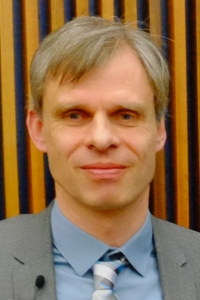
Growth kinetics of AlN and AlGaN deposition on AlN(0001): A kinetic Monte Carlo study
Dr. Wolfram Miller (Leibniz-Institut für Kristallzüchtung (IKZ), Germany)
Wolfram Miller has worked more than 20 years in the field of simulations for crystal growth processes, both single crystal growth and epitaxy. A special focus has been on growth kinetics especially in the case of deposition processes. For the latter mainly atomistic methods have been applied, such as density functional theory and kinetic Monte Carlo study.
Wolfram Miller received his master degree in theoretical physics and worked at the Fritz-Haber-Institute for his PhD thesis. Since 1996 he is at the Leibniz-Institut für Kristallzüchtung in Berlin.
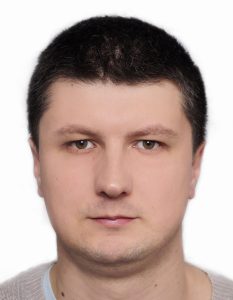
Numerical simulations of AlGaN heterostructures with polarization-doping
Dr. Konrad Sakowski (Warsaw University, Poland)
Konrad Sakowski received the PhD in mathematics from University of Warsaw, Poland, in 2017. He is currently an assistant professor at Institute of Applied Mathematics and Mechanics, University of Warsaw and an assistant at Institute of High Pressure Physics, Polish Academy of Sciences. He is interested in interdisciplinary research related to applications of mathematics and numerical modeling, in particular in semiconductor physics and semiconductor devices.
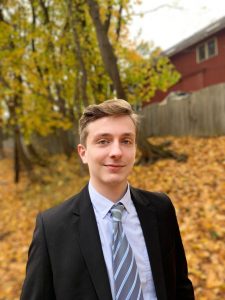
Excitonic luminescence in homoepitaxial N-polar AlN grown on bulk substrates
Dr. Len Van Deurzen (Cornell University, USA)
Len van Deurzen is currently a fourth-year doctoral student in the Debdeep Jena and Grace Xing research group at Cornell University. He received a B.S. in physics from the University of Florida in 2019, and a M.S. in applied physics from Cornell University in 2022. His work focuses on ultra-wide bandgap optoelectronics, with an emphasis on stimulated emission mechanisms in (Al,Ga)N heterostructures grown by molecular beam epitaxy.
8. UV Characterization Techniques

Cathodoluminescence excitation spectroscopy: revealing the excitation pathways in the nanometer scale
Dr. Yves Auad (LPS, France)
Yves Auad has a bachelor’s in Physics Engineering, with a short experience at the Brazilian Synchrotron Light Source (LNLS) before starting his master’s at Unicamp (Campinas State University, Brazil) working in the development of an efficient light collector device for a UHV He-based Scanning Tunneling Microscope (STM). In 2022, he obtained his Ph.D. under the supervision of Dr. Mathieu Kociak and Dr. Luiz Tizei from Université Paris Saclay, aiming to develop new spectroscopic techniques in a Scanning Transmission Electron Microscope (STEM). More specifically, the demonstration of μeV spectral resolution in a state-of-the-art monochromated, aberration-corrected electron microscope and the first demonstration of Cathodoluminescence Excitation Spectroscopy (CLE). Currently, he works at the LPS (Laboratoire de Physique des Solides) at Orsay hired by the CNRS (Centre national de la recherche scientifique) as a research engineer and is mainly interested in advanced electron microscopy instrumentation.
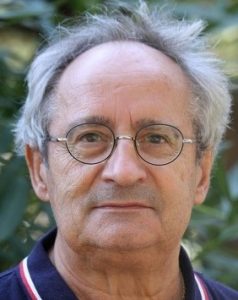
The Optical Properties of Various Polytypes of sp2-bonded Boron Nitride
Prof. Bernard Gil (L2C, France)
Bernard Gil has been Researcher at the CNRS (National Center of Scientific Research) since 1982. He is today Director of Recherche of Exceptional Class at the Institute of Physics (INP). He is an experimentalist, expert in the measurement of the coupling between the electromagnetic field and the electronic states of solids. He has been studying in depth the optical properties of semiconductors, with, since 1994, some specific interest to the nitride semiconductors for compact-solid state lighting and energy savings linked to the utilization of this technology. He is currently very much concerned by Quantum Technologies and by the emission of light in the deep ultraviolet range, for the eradication of pathogens, using as an active material boron nitride grown under different polytypes. Gil was awarded in 2012 Doctor Honoris Causa of the University Saint Petersburg, and in 2013 Doctor Honoris Causa of the Meijo University of Nagoya. He is the 2018 laureate of the Welker Award.
9. 2D Material-based epitaxy and layer transfer for UV

2.5-inch hexagonal boron nitride for van der Waals heteroepitaxy and p/n type conductions
Prof. Duanjun Cai (Xiamen University, China)
Duanjun CAI is a Professor at College of Physical Science and Technology of Xiamen University, China. He received his PhD degree on Condensed Matter Physics from Xiamen University in 2006. After working as a postdoctoral fellow in National Taiwan University of Taiwan and University of Coimbra of Portugal, he joined Xiamen University in 2011. He also served as an Adjunct Associate Professor at National Taiwan University in 2013 and a visiting Professor at Duke University in 2016. He has authored over 100+ papers in peer-reviewed journals and international conferences, and is the principal inventor on more than 40 patents. His current research is mainly focused on 2D h-BN materials and functional heterostructures, AlGaN based deep UV optoelectronic devices, and Cu nanosilks network as advanced broad-band transparent electrodes.
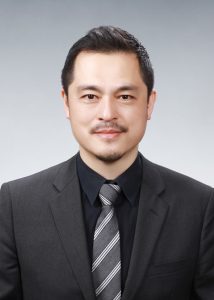
Growth of hexagonal boron nitride by MOCVD for DUV applications
Prof. Kim Jong-Kyu (POSTECH, Korea)
Dr. Jong Kyu Kim is a Professor in the Department of Materials Science and Engineering at POSTECH, South Korea. Dr. Kim has made pioneering contributions to the field of compound semiconductor materials and devices in particular to the fields of AlGaInN-based blue and deep-ultraviolet LEDs, hexagonal boron nitride (b-BN), and nanostructured materials for various photonics and energy applications. He has authored or co-authored more than 200 peer-reviewed publications and 6 book chapters.
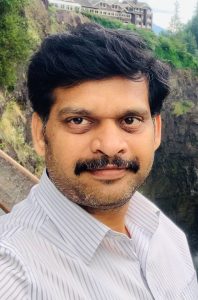
Layered Boron Nitride for deep UV optoelectronics
Dr Suresh Sundaram (GeorgiaTech-CNRS, France)
Dr. Suresh Sundaram, is a research faculty at Georgia Tech Europe in Metz (France), leading a MOVPE growth group. He obtained his “l’Habilitation à Diriger des Recherches (HDR)-Accreditation To Supervise Research” from Université de Lorraine on December 2022. His research focusses mainly on MOVPE growth of III-nitrides and its nano/heterostructures. He has actively contributed on hetero-integration of 2D boron nitride with other materials. His research work has generated more than 75 peer reviewed journal article publications. Since 2020, he has also organized several international workshops on advanced epitaxial growth methodologies. He has successful collaborations on developing novel materials and device structures for future technologies.
10. Applications (medical and others) of Lasers and LEDs
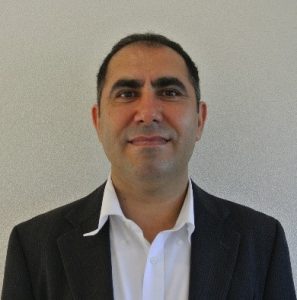
Progress and Challenges of Transparent AlGaN-based UVB LEDs
Dr. Ajmal Khan (Farmroid Co, Japan)
Dr. M. Ajmal Khan (Wazir) was born in Wana (South Waziristan), Pakistan and now permanent resident of Japan. He received his M. Sc and M. Phil degrees in Applied Physics from Quaid-i-Azam University, Islamabad, Pakistan, in 1998 and 2001, respectively. Later, he received his PhD degree in applied physics from Graduate School of Pure and Applied Sciences, University of Tsukuba, Japan in 2013. In 2012, during his PhD work, he has discovered the thin film of boron (B) doped p-type BaSi2 layer “p+” along with his PhD supervisor Prof. Takashi Suemasu (Appl. Phys. Lett. 104, 252104 (2014)). After his discovery the efficiency of the solar cell was enhanced from 1.4% to 10%. Later he joined the team of FUTURE PV-Innovation, Japan Science and Technology Agency, Fukushima Renewable Energy AIST Institute (FREA), Koriyama in 2014 and worked on Si NWs, c-SiGe and a-Si/c-Si heterojunction solar cells. In 2017, he moved to Prof. Hideki Hirayama Lab at RAP Riken and later in 2020 moved to RIKEN Cluster for Pioneering Research as a research scientist. Since then, he has been doing research on the epitaxial growth, characterization, and device applications of group III-nitride semiconductor-based UV LEDs and UV Laser Diodes. He has developed an AlGaN UVB LED with a world record efficiency of 9.6% with a light power of 40 mW on bar-wafer (Sci Rep 12, 2591 (2022)). In 2021, he moved to Farmroid Co., Ltd. as a senior research scientist and to work on the R&D project of Far-UVC LED for SARS-CoV-2 inactivation and development of UVB LEDs too. He bears various roles and responsibilities, such as being a visiting Scientist at RIKEN, a renowned member of the Japan Society of Applied Physics (JSAP), and guest editor of the MDPI journal of “Crystals”. He delivered more than 120 talks including keynote and invited talks in the international conferences. Also contributed more than 140 research publications.
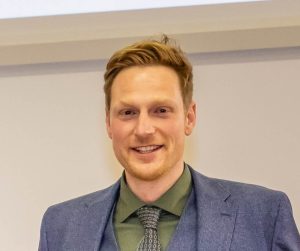
Degradation effects – Similarities and differences of UV LEDs with different wavelengths
Dr. Jan Ruschel (Ferdinand-Braun-Institut, Germany)
Jan Ruschel works as a scientist in the Joint Lab GaN Optoelectronics at the Ferdinand-Braun-Institut (Germany). He received his PhD in 2021 from the Technische Universität Berlin. Since 2016, he has been working in the field of characterization and optimization of AlGaN-based UV LEDs. His particular focus is on the investigation of aging mechanisms that shorten the lifetime of UV LEDs in long-term operation. His main goal is to improve both the lifetime and efficiency of these devices to enable their broad use in many applications such as phototherapy, sterilization or gas detection.
